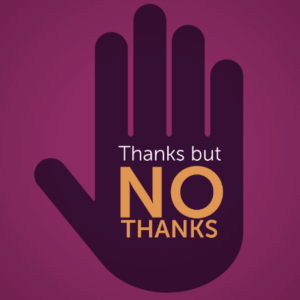Today's leaders have super demanding jobs. One of the tools available to meet the demands is leveraging the experience and institutional knowledge of other leaders. Help - asking for it or giving it is a way to release these assets!
Today’s leaders operate in a demanding and dynamic environment. Translation – it isn’t easy. Where can they get help and support to meet the demands? There is an underused or even entirely untapped asset present in most organizations.
That asset is the stored experience and institutional knowledge in the company.
Mining this asset requires fostering an environment where help is free-flowing. Help in the form of experience, creative problem solving and support from other leaders and influencers. Some days you may seek help, other days you may be a provider. Either way, this flow of ideas, information and consideration promote personal growth and the culture as a whole.
The net effect, individuals and the business meet the challenges of the day with increased energy and proficiency.
This capacity, problem-solving or otherwise, that remains locked up because some are hesitant to ask for or accept help while others are hesitant or unwilling to give.
Individual leaders, departments, and organizations need to optimize this asset of organizational help/support by nurturing it and more visible modeling of specific behaviors.
It becomes a natural and healthy part of how people and the business operate.

Charlie Girl
I got a puppy about a year ago. Charlie (a girl) is an adorable, occasionally too smart for me, Portuguese Water Dog. She is the absolute best for more than one hundred reasons. I know. I know.
No worries, the dog references are almost over. It’s with a purpose I promise.
Raising and training a puppy (and an owner) invariably leads to funny, confounding and satisfying moments. During my process, I’ve both seen numerous parallels to the business world and uncovered opportunities for personal development.
You Aren’t In It Alone!
Raising a puppy in Manhattan has some unique challenges. On the plus side, you get a chance to see others doing the same as you are in a public way. It means you are out there doing it in a public way too. It makes you better in some way!
Take this guy for example.

I can relate. Puppies and young dogs are overflowing with energy until they want to stop and sit. And sit.
I saw this guy outside a coffee shop. My first reaction was solace that I wasn’t only one not able to inspire movement on the sidewalk. He got away before I could get to him and say – don’t worry it happens to all of us.
Most importantly, I wish I could borrow his experience and whatever he said to get his little guy to move along. Maybe nothing, but perhaps something I could learn.
You Are Not Alone
Over the last year, countless times when embroiled in one or more of the issues associated with the four behaviors of puppies (eat, sleep, play and you know), I ran into another dog owner dealing with and talking about the same problem.
Of the many lessons, it’s clear there are a lot of people in the same boat. And dog owners all talk about even the messiest of challenges! There is plenty of sharing and advice to go around.

Back In The World Of Business
I couldn’t help but think, why doesn’t some appropriate version of this go on in the day to day in the world of managing and leading people. For example, every manager is working nuanced, often highly personal and what feels like unique people related situations.
There is no playbook for how to deal with the rough stuff. The collective experiences and wisdom in your organization (yours and your colleagues) are a potential source of knowledge. What if everyone tapped into more intentionally and without reservation?
Related: 9 Things People Do If They Want You To Be Successful As A Leader
The Tangible Benefits For Today’s Leaders
Let’s start with the end in mind – how would it make a difference. If those needing help asked and those with ideas and the ability to support more willingly jumped in, the business would benefit tremendously.
Here’s how:
1. You find out you are in the same boat with others
You can’t but be comforted and even get a partial energy re-charge from knowing other leaders also face the genuinely challenging and sometimes wacky or petty issues.
Yes, other people have experienced. You will move through it as well.
2. You get better, faster
By tapping into peers who have dealt with the same or similar situations, you accelerate learning. The first time you deal with any problem is the first time. There are too many possible scenarios and nuances with managing people to think you’ll know how to handle all of them well.
Even if you don’t know someone who has dealt with the exact situation, others can assist. Thinking out loud, talking through solutions, and maybe also rehearsing difficult conversations, make you better.
Put yourself out there and borrow the experience of others.
3. You give the culture a positive jolt
What good is the possibility of collaboration if it doesn’t evidence freely with gnarly issues. And who wants to join or work in a culture where no one helps, or where asking for help has some a stigma.
4. Helping is healthy
You look and feel better if you ask for and are willing to receive help.
First up, it helps your standing. People want to work for leaders who exercise enough humility to know they must continue to grow and in an environment where they are encouraged to do the same. Part of this comes from engaging others with broader and different expertise.
As Marcel Schwantes outlines in 4 Habits Of Ultra-Likable Leaders That Are Hard To Find
One of these is Every Good Leader Soaks Up The Wisdom Others.
Second, you feel better when you help and contribute to the success of others. When people provide help, they have a more significant connection to the person and the outcome.
In fact one of the strategies sometimes used to increase employee engagement is to ask them to help. Calling them to a problem, them seeing the positive benefits of that help, increases their engagement.
What Does Help Look Like
Adam Grant has done extensive research and writing about the idea of giving and taking in the workplace. Grant and Reb Rebele in their recent article More on Being Generous Without Being A Doormat offer a helpful way for today’s leaders to think about help or giving. “…we’ve found six profiles of giving:
Note: If you haven’t read Give & Take by Adam Grant, check it out. Instructive, research-backed view about the currency of giving in the workplace).
So Why Don’t Some People Want Help?
I’ve long thought most people respond to straight up, well-intentioned ask. The not often talked about reality is many people don’t want help and in some cases actively resist.
In the article Why We Don’t Let Coworkers Help Us, Even When We Need It, Harvard Business Review outlines five key reasons people avoid being helped:
- Want to do the work on their own (even if it means staying late)
- Concerned about how they are viewed
- Don’t want to owe any favors
- Distrust motivation of their coworkers’ for helping
- Don’t see coworkers as more capable of helping
In fact, the article cited that:
Almost 20% said that they declined offers of assistance so that they wouldn’t owe their coworkers favors.
Yikes.
Hence the positive benefits for today’s leaders and the culture they are looking to influence if these barriers are knocked down.
How To Ask So That People Want To Help
All the above said you want to ask for help in a way that doesn’t make people feel boxed in about your ask (guilted, threatened, etc.). The article How To Get The Help You Need lays out both the art and science of asking for help in a way
As the article points out, one of the easy, free and reinforcing things you can do is to follow up and let people know how their help made a difference. People want to know it matters.
Make sure they do.
The Pitfalls
Today’s Leaders Can Guide A Different Future
You can guide an increase in people accepting and giving help. A few specifics:
- Encourage asking and offering as part of the collaborative process and culture you want to foster. Recognize the work and positive outcomes.
- Model both behaviors – asking for help and giving without penalty.
- If there are holdouts that won’t accept any help, push into the situation.
- Don’t recognize those that go it alone as heroes. Find out what barrier is for them engaging and how can you help address.
Final Thoughts
So, what to do, how to do it. My suggestion for today’s leaders — is to ask yourself two questions periodically:
- How can I borrow the experience of others to make my business better?
- Who can I let borrow some of my experience to help make their business better?
When you next find yourself in need of help, remember that people are willing to give it much more often than not. Few will think less of you for needing assistance. And there is no better way to make someone feel good about himself or herself than to ask for it. It brings out the best—and the best feelings—in all of us. -Harvard Business Review
Question: How do you encourage people in your business to ask for help when needed?



